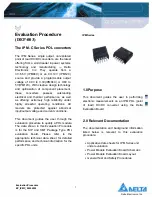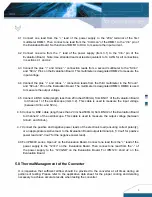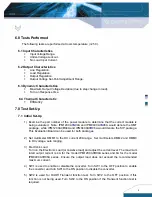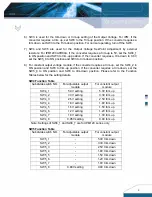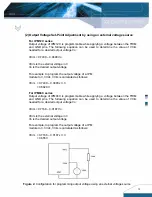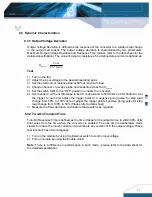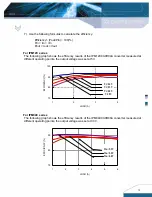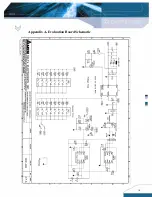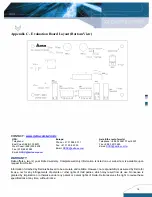
8.2 Output Characteristics
Line Regulation Deviation is defined as the change in output voltage caused by varying the
ied range while the output load and temperature remain constant.
2 Set the output power to the desired operating point.
t the switch SW1 to the “OFF” position to enable the converter.
8.2.1 Line Regulation
input voltage over a specif
Test
1) Turn on the fan.
)
3) Se
4) Adjust the input voltage across the converter’s input range (refer to specified range) while
full range of the input
Load Regulation Deviation is defined as the changes in output voltage caused by varying the
e specified range (no load to full load) while the input voltage and
mperature remain constant.
) Set the input voltage to the desired operating level while monitoring DMM2.
t the switch SW1 to the “OFF” position to enable the converter.
load across the converter’s operating load range.
the operating
ion).
Output Ripple is defined as the periodic AC component on the DC/DC converter’s output
le is measured in terms of peak to peak and RMS values, both done
ith a specific bandwidth.
) Set the switch SW1 to the “OFF” position to enable the converter.
just the input voltage while monitoring DMM2 and set the output load to the full rated
nd 10mV/Div using the
5)
ple of the DC/DC converter is measured at full load operating power
.
monitoring DMM2.
5) Note the m/- deviation of the output voltage over the
operating voltage (please refer to the data sheet for the detailed specification).
8.2.2 Load Regulation
output load current over th
te
Test
1) Turn on the fan.
2
3) Se
4) Adjust the output
5) Note the m/- deviation of the output voltage over the full range of
load range (please refer to the data sheet for the detailed specificat
8.2.3 Output Ripple
voltage. The output ripp
w
Test
1) Turn on the fan.
2
3) Ad
load current.
4) Adjust channel 2 on the oscilloscope to be AC coupled at 1µS/Div a
20 MHz bandwidth-limit option on the scope.
The output rip
7

